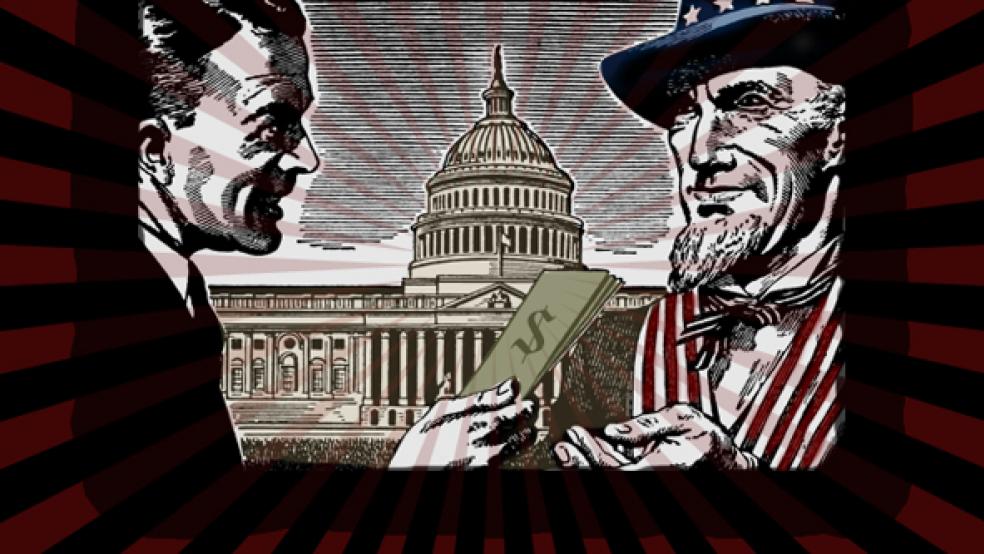Paging Warren Buffett!
The Internal Revenue Service has released its annual look at the 400 taxpayers reporting the highest adjusted gross incomes, a group known as the Fortunate 400, and the numbers show that some Americans made hundreds of millions of dollars but paid lower effective tax rates than others far lower on the income ladder – some as low as zero. Really.
As the presidential election campaign intensifies and the debate once again turns to what level of tax burden the wealthiest Americans should bear, these new numbers give some fresh ammunition to advocates of the Buffett Rule – President Obama’s proposal to require any household making more than $1 million to pay a minimum of 30 percent in taxes.
RELATED: The Real Buffett Rule Calls for Broadly Higher Taxes
The latest report shows that in 2009, those 400 taxpayers reported adjusted gross incomes averaging $202.4 million – and paid an average tax rate of less than 20 percent. Six households in the group paid no federal income taxes at all. Zilch. Nothing. Nada. Perhaps they gave their accountants nice bonuses with some of the millions they didn’t have to send Uncle Sam.
But there’s more to the tax numbers than that. The IRS data also shows that the Fortunate 400 weren’t quite as prosperous in 2009 as they were before the Great Recession. The club sees a lot of churn from year to year – and the income required to make it into the club has swung wildly over time. More than 3,800 different taxpayers have been in the group since 1992, and just more than one in four of those taxpayers made it into the club more than once.
But while the average income of the group stood at $104 million in 2002, that number jumped to almost $345 million in 2007. It then fell back sharply during the recession, to $270.5 million in 2008 and then just over $202 million in 2009, a 41 percent drop compared with two years earlier.
As the financial crisis roiled the markets and eroded their capital gains, those wealthiest families saw their total income tax bills drop from $22.9 billion in 2007 to $16.1 billion in 2009. At the same time, they paid a higher share of their income in taxes, with an effective tax rate of 19.91 percent, up from 16.62 percent in 2007 and the highest such rate since 2002. As Reuters columnist David Cay Johnston notes – his column, found here, is worth reading – that 19.91 percent is the same rate paid by a single worker making $110,000, yet the top 400 earned five times as much every single day of the year.
So while the effective tax rates for the Fortunate 400 may have edged up as their earnings from capital gains decreased, the latest figures are bound to further stoke the ongoing debate over how much the country’s top earners should be taxed. That question has arisen again in recent days after former president Bill Clinton suggested Tuesday that Congress should temporarily extend all the Bush-era tax cuts, including those for the top 2 percent of earners, in order to avoid a fiscal standoff that could potentially devastate the economy. After Congressional Republicans used the comments to publicly press the Obama administration on the tax cuts, Clinton apologized for the comments Thursday and said he agreed with Obama, who is insisting on letting the Bush tax cuts for the wealthiest Americans expire at the end of the year.
RELATED: The Buffett Rule: A Gimmick Worth Debating
But the debate is certainly far from over. Mitt Romney has proposed a tax reform plan that would cut marginal rates by 20 percent across the board – a proposal that would benefit the wealthy the most – and eliminate the alternative minimum tax along with some tax provisions from the 2010 Affordable Care Act but keep the current rates on interest, dividends and capital gains. (Romney, by the way, is a relative pauper compared with the families in the IRS report. He hasn’t released his 2009 taxes, but his 2010 tax return listed an adjusted gross income of $21.6 million, or about a tenth of the average for the IRS’s top 400. To make it into that top group in 2009, households had to have adjusted gross income of $77.4 million.)
Of the 400 taxpayers in the IRS report, 27 had effective tax rates between 0 and 10 percent and another 175 had effective tax rates between 10 and 20 percent. In all, 318 of the 400 paid less than 30 percent in taxes. If the Buffett Rule had been in effect in 2009, some quick calculations suggest those 400 families would have paid as much as $8.2 billion more in taxes.
That’s a drop in the bucket in terms of overall government revenues and spending, but it has taken on disproportionate significance as part of the broader debate on rising income inequality in the wake of the financial crisis. Is it fair that six families can make tens or hundreds of millions without paying a dime in federal taxes? On the other hand, plenty of people wonder if it’s fair that the bottom 50 percent of taxpayers can earn more than a trillion dollars and pay a total of $19.5 billion in federal income taxes, just a few billion more than the 400 top households.
Whatever side of the debate you’re on, it’s hard not to see a need for comprehensive tax reform that makes the whole system more fair.
“By what economic, political or moral standard should working stiffs be forced to pay their taxes immediately, while plutocrats pay their taxes by-and-by? And why should anyone who makes more than $200 million live tax-free?” Reuters’ Johnston writes. “Those are questions to ask candidates on the hustings, insisting they give specific, focused answers.”
We’ve got four months left to do it.





